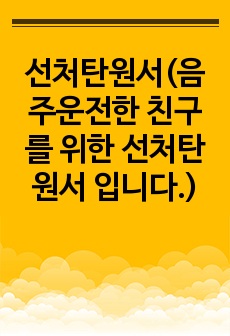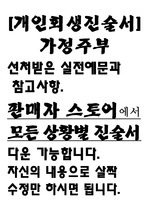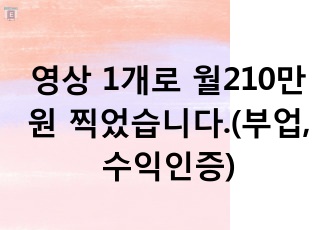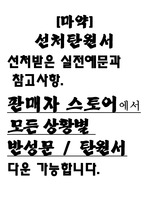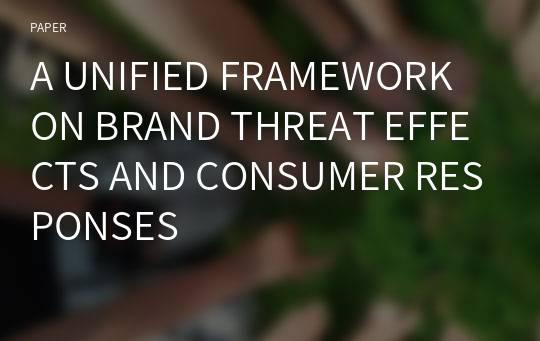A UNIFIED FRAMEWORK ON BRAND THREAT EFFECTS AND CONSUMER RESPONSES
* 본 문서는 배포용으로 복사 및 편집이 불가합니다.
서지정보
ㆍ발행기관 : 글로벌지식마케팅경영학회(GFMC)
ㆍ수록지정보 : GFMC Session1
ㆍ저자명 : Paurav Shukla, Dina Khalifa
ㆍ저자명 : Paurav Shukla, Dina Khalifa
영어 초록
Brand threats are unexpected, widely spread negative brand occurrences that are manifest in various forms such as rumours (Einwiller et al., 2008), negative publicity (Ahluwalia et al., 2000), ethical scandals (Huber et al., 2010; Lisjak et al., 2012; Trump, 2014) and product failures (Dawar and Pillutla, 2000; Ahluwalia et al., 2001). They are quite common in the marketplace with adverse effects on brand reputations and brand equity (Duttta and Pullig, 2011) by thwarting consumers` expected benefits from the brand (Ahluwalia et al., 2000; Dawar and Pillutla, 2000; Dutta and Pullig, 2011).Due to the frequency and seriousness of brand threats, academic interest in studying the effects of brand threats as well as predicting consumers responses has been rising in the past decade (Swaminathan et al., 2007; Cheng et al., 2012; Lisjak et al., 2012; Trump, 2014). Brand threat literature has evolved over the years from few case studies focusing on organizational response strategies to empirical work documenting cognitive and attitudinal responses by consumers to different types of threats. However, there are still a number of inconsistencies within this loose body of work that requires further research attention. The following section will highlight some of the most imminent controversies within the brand threat literature and thus paving the way for the current review paper to synthesize different streams of research and offer some conceptual clarity on brand threats.
First, with regards to the conceptualization of brand threats, there appears to be no broad agreement on a precise definition of what constitutes a threat at the brand level. Over the past few years, scholars have expressed this notion using words such as negative brand publicity (Ahluwalia et al., 2000;2001; Pullig et al., 2006), brand scandal (Roehm and Tybout, 2006), brand failure (Roehm and Brady, 2007; Cheng et al., 2012), brand-related crisis ( Dawar and Lei, 2009; Dutta and Pullig, 2011), brand misconduct (Huber et al., 2010) and brand transgression (Trump, 2014). While these definitions can be used interchangeably as they reflect the overall characteristic of brand threats; they draw upon different theoretical foundations. As a result, competing views and understandings of brand threats have materialised, resulting in perennial dissensus within the extant literature.
In addition, there is a debate in the literature with regards to the differential effects of brand threat types. The majority of prior research on brand threats has predominantly focused on two types of threat which is product–related brand threat (Ahluwalia et al., 2000; 2001; Cheng et al., 2012; Swaminathan et al., 2007) and values-related brand threats. Product-related threats usually involve defective or dangerous products and reduce a brand's perceived ability to deliver its functional benefits (Dawar and Pillutla, 2000; Pullig et al., 2006; Roehm and Brady, 2007; Dawar and Lei, 2009). Values-related threats, on the other hand can be defined as unexpected events that threaten a brand's perceived ability to deliver expressive or symbolic benefits (Dawar and Lei, 2009; Pullig et al., 2006). They do not involve the product but rather the social or ethical values of the brand (e.g., Pullig et al., 2006). Both types of threats have negative impact such as brand equity, satisfaction and choice likelihood (Dutta and Pullig, 2011), however existing work offer contradictory findings with regards to the degree of damage caused by either type of brand threat. While some studies implicate the product related threats are more damaging to the brand, other studies indicate that values related threats have more negative impact. For instance, product related threats have been reported to damage brand image and trust (Dawar and Pillutla, 2000), lead to consumer brand switching and consequently cause financial losses (Cleeren et al., 2008). On the other hand, Huber et al. (2010) report that a brand's moral threat can be more damaging for consumers` relationship quality with the brand as well as repurchase intention. In addition, Folkes and Kamins (1999) indicate that negative ethical information is perceived as more diagnostic than product attribute information. Additionally, Trump (2014) compared both types of threats (product vs. ethical) in the same study and reported that ethical-related brand threats can be more damaging than product-related threats. This in turn has contributed to growing inconsistencies within the brand threat literature and elaborated the need for more empirical work to reconcile these conflicting streams of research.
An additional layer of controversy within the brand threat literature pertains to the impact of consumer brand relationship in predicting consumer responses. The general assumption is that the stronger the relationship between the consumer and the brand, the more insulated the brand remains from the negative impact of brand threats, however research yield mixed results. While some studies indicate the positive role of strong consumer brand relationship in mitigating the negative impact of brand threats (Ahluwalia et al., 2000; 2001; Einwiller et al., 2006), studies by Roehm and Brady, (2007) and Cleeren et al., (2008) suggest that these positive impacts are only shortlived. While other researchers show that high quality brand relationship may actually result in more negative consumer responses following threat (Hubler et al., 2010).
Lastly, there has not been a unified conceptual framework to predict consumer responses to brand threat; different studies have used different theoretical underpinnings to examine the phenomenon reporting different results. Earlier studies on the subject were quite sparse, apart from a few attempts limited to case studies from public relations and publicity literature, there has been no systematic study of how consumers respond to brand threats (Ahluwaia et al., 2000). A common assumption in that literature was that brand threats in the form of negative publicity is considered more credible and influential than the brand`s marketing communications and therefore will always lead to serious adverse consequences (Bond and Kirshenbaum, 1998). Moreover, consumers were assumed to always respond in a uniform manner (Mgrconi, 1997; Pearson and Mitroff 1993). Although these studies have offered insights into how people process negative information and form evaluations, their findings were limited to experimental contexts in which subjects have to evaluate unfamiliar individuals.
Although, several theoretical models have been proposed to understand consumers' responses to different types of brand threats (Ahluwalia et al., 2000; Dawar and Pillutla, 2000; Dawar and Lei, 2009; Huber et al., 2010; Roehm and Tybout, 2006; Cleeren et al., 2008; Dutta and Pullig, 2011), the findings of these studies reported mixed findings. Additionally, this body of work failed to present a unifying theoretical framework that predicts how consumers respond to negative information about commercial brands that they are familiar with nor did they identify the factors that could moderate the response strategies (Ahluwalia et al., 2000).
Therefore, the current study seeks to review the existing literature on brand threats to propose an integrative classification framework that predicts consumer responses to different types of brand threats. Specifically, this review will offer four important contributions. Firstly, the review will offer a holistic conceptualization of brand threats and its different forms. Secondly, it will highlight existing studies that demonstrate consumer responses to brand threats and the important moderating factors captured in previous studies clustered around four main categories: corporate responses, threat-related characteristics, consumer characteristics, and consumerbrand relationships. Thirdly, the review will propose a theoretical framework and a number of propositions that predict the conditions under which consumers pursue specific responses to brand threat. The proposed framework will also identify a number of situational factors and individual traits that moderate may consumer responses. Lastly, the review will conclude by highlighting underdeveloped theoretical intersections pertaining to the long term effects of brand threats and suggesting potentially fruitful directions for future inquiry. The above contributions will integrate brand threat research in marketing and management theory within a single organizing framework. Moreover, by consolidating past results and setting the stage for further efforts, this review will seek to foster greater integration of fresh perspectives from other disciplines such as social psychology, sociology, consumer research and management to broaden the scope of research on band threat.
참고 자료
없음"GFMC Session1"의 다른 논문
 FAST AND SLOW FASHION BRANDS IN DEVELOPING SUSTAINABLE ..6페이지
FAST AND SLOW FASHION BRANDS IN DEVELOPING SUSTAINABLE ..6페이지 “WHAT IF A CELEBRITY AND A BRAND CO-CREATE A NEW COLLEC..7페이지
“WHAT IF A CELEBRITY AND A BRAND CO-CREATE A NEW COLLEC..7페이지 THE INSTAGRAM’S STRATEGY IN ENGAGING THE CUSTOMER’S LOY..3페이지
THE INSTAGRAM’S STRATEGY IN ENGAGING THE CUSTOMER’S LOY..3페이지 THE PARTICULARITIES OF NEW PRODUCT DEVELOPMENT IN THE T..5페이지
THE PARTICULARITIES OF NEW PRODUCT DEVELOPMENT IN THE T..5페이지 THE LONE CHOCOLATE BAR: THE INFLUENCE OF PERCEIVED SCAR..6페이지
THE LONE CHOCOLATE BAR: THE INFLUENCE OF PERCEIVED SCAR..6페이지 ADS AS WORKS OF ART: MEASURING ADVERTISING IMMERSION3페이지
ADS AS WORKS OF ART: MEASURING ADVERTISING IMMERSION3페이지 ECONOMIES OF SMALL: NICHE STRATEGIES AND SUCCESS FACTOR..8페이지
ECONOMIES OF SMALL: NICHE STRATEGIES AND SUCCESS FACTOR..8페이지 THE INFLUENCE OF ONLINE CUSTOMER REVIEWS ON RETAILERS' ..6페이지
THE INFLUENCE OF ONLINE CUSTOMER REVIEWS ON RETAILERS' ..6페이지 IS THE ARTIFICATION PROCESS PERCEIVED BY FINAL CONSUMER..6페이지
IS THE ARTIFICATION PROCESS PERCEIVED BY FINAL CONSUMER..6페이지 THE ODD EVEN PRICE PARADOX IN THE FASHION LUXURY SECTOR6페이지
THE ODD EVEN PRICE PARADOX IN THE FASHION LUXURY SECTOR6페이지











